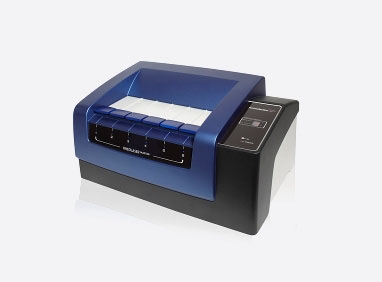
END-USE PROPERTIES & GEL POINT ANALYSER
Rheolaser™ is dedicated to formulators interested in the end-use properties of their products.
The Rheolaser™ MASTER is also specifically designed to determine very accurately gel points, thanks to the Time Cure Superposion (TCS) method.
Rheolaser is designed to answer to the following questions:
- What is the gel point of my systems, in function of time, temperature, concentration, pH, etc... ?
- What is the effect on the product properties if I change the polymer nature / concentration / molecular weight ?
- Will it stick (to the hand, to another product, ...) ?
- Will it spread easily ?
- Will it keep its shape ?
- Will it be stable ?
- Will it flow ?
- And many more...
Contact us with your problematic and we will determine the right parameters for you!
Automatic and one-click plot of microrheological parameters of the material : elasticity, viscosity, solid-liquid balance...
Automatic plot of particle Mean Square Displacement (MSD) or decorrelation curve (d2) for experts in DWS.
APPLICATION FIELDS
-
Cosmetics
-
Pharmaceuticals
-
Food
-
Paint & Ink
-
Polymers
-
Oil & Petroleum
-
& many others...
A NEW WAY TO ANALYSE VISCO-ELASTIC PRODUCTS
ELASTICITY INDEX (EI)
Monitor properties such as: mesh size, hardness, recovery after a shear, etc...
This parameter enables easy comparison of many products in terms of elasticity strength. This value offers a quick and easy ranking of the structure in any studied products, in just one-click.
SOLID-LIQUID BALANCE (SLB)
Monitor properties such as: adhesion, spreadability, gel point, shape stability, physical stability, etc...
Using this parameter allows the user to know easily if his product is rather liquid-like or solid-like (how is the gel structure?).
MACROSCOPIC VISCOSITY INDEX (MVI)
Monitor properties such as: effect of a thickening agent, texture, flowability, long-term stability, etc...
Rank your products depending on their macroscopic viscosity at zero-shear in just one-click, and control their stability by monitoring the evolution of this parameter versus ageing time.
TIME CURE SUPERPOSITION METHOD (TCS)
When a gel is forming, the sample's rheology evolves from liquid state to solid state (Sol-Gel transition). Acquisitions of Particles MSD curves as a function of gel variables (Time, Temperature, Concentration, pH...) enable the monitoring of the sol-gel process.
A rescaling data processing, known in rheology as "Time Cure Superposition", may be applied to determine with high precision gel point and gel strength parameters
PHYSICAL PARAMETERS
For the experts in rheology and DWS, it is possible to compute physical parameters such as the elastic and viscous moduli (G' and G''), relaxation time (tR), macroscopic viscosity at zero-shear, diffusion coefficent, mesh size, and many others...
Keywords linked to the page : Viscoelastic properties.
MAIN ADVANTAGES
-
Measurement AT REST (zero-shear), non-intrusive, and non-destructive.
-
1-click experiment & results
(no parameters needed).
-
Ageing analysis on the very same sample.
-
Hazardous samples analysed in a closed glass cell.
EASY OPERATION
EASY SAMPLING
Material is sampled in a disposable glass cell:
Easy to handle
No evaporation
Easy storage
Easy to clean
EASY SAMPLE PROCESSING
Sample is loaded in one of the 6 storage positions:
One-click measurement
No apparatus set-up
EASY DATA PROCESSING
One-click automatic plot of:
-
Particle Mean Square Displacement (MSD)
-
Solid Liquid Balance (SLB)
-
Elasticity Index (EI)
-
Macroscopic Viscosity Index (MVI)
-
Time-Cure-Superposition (TCS), to determine gel-point accurately.
|

